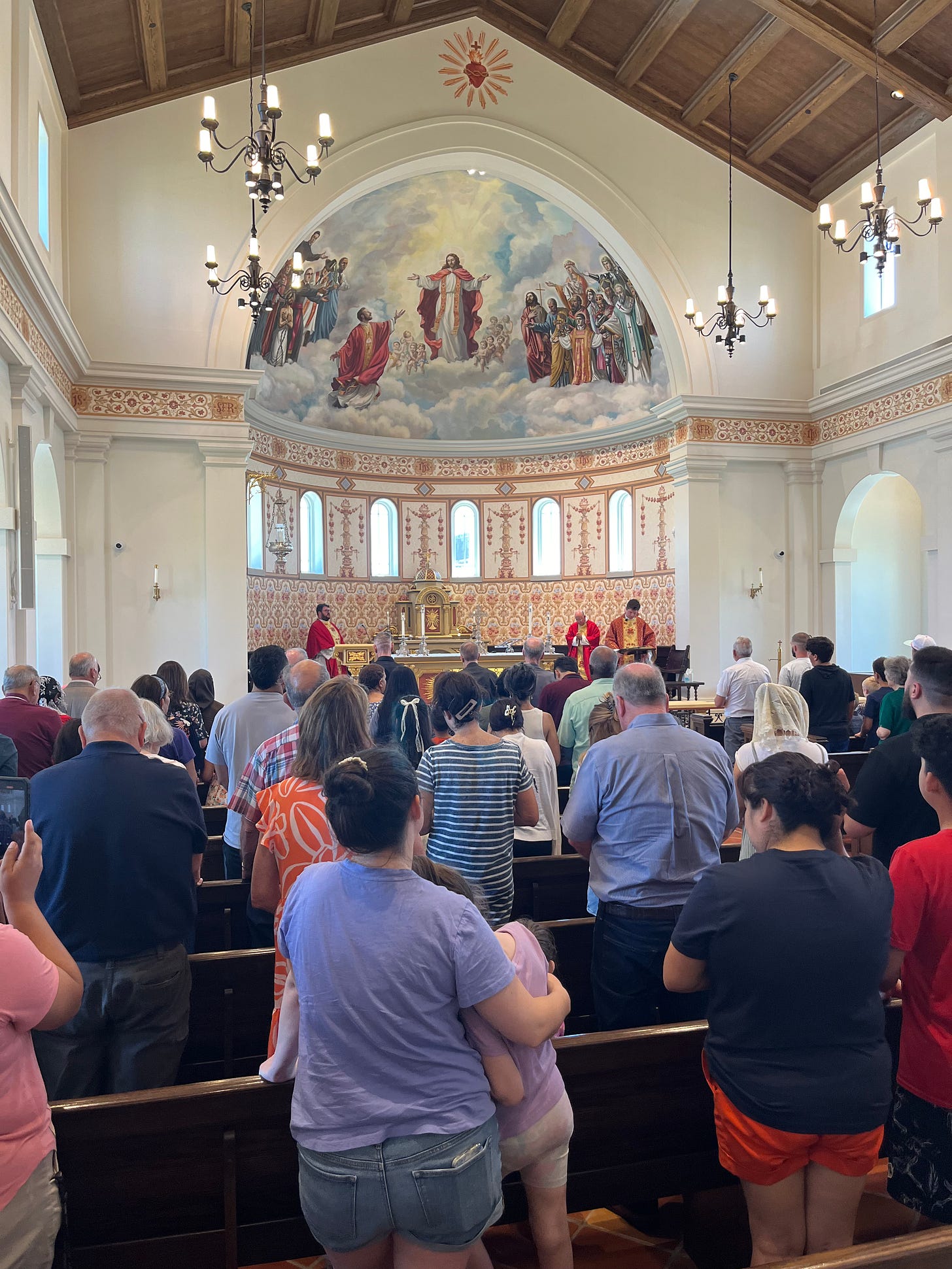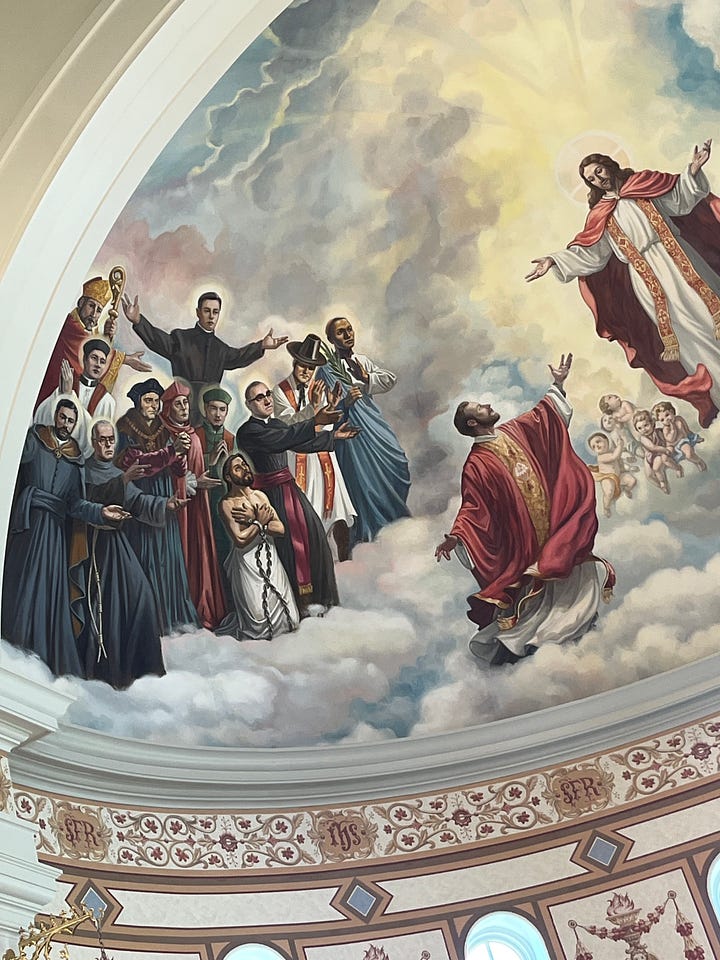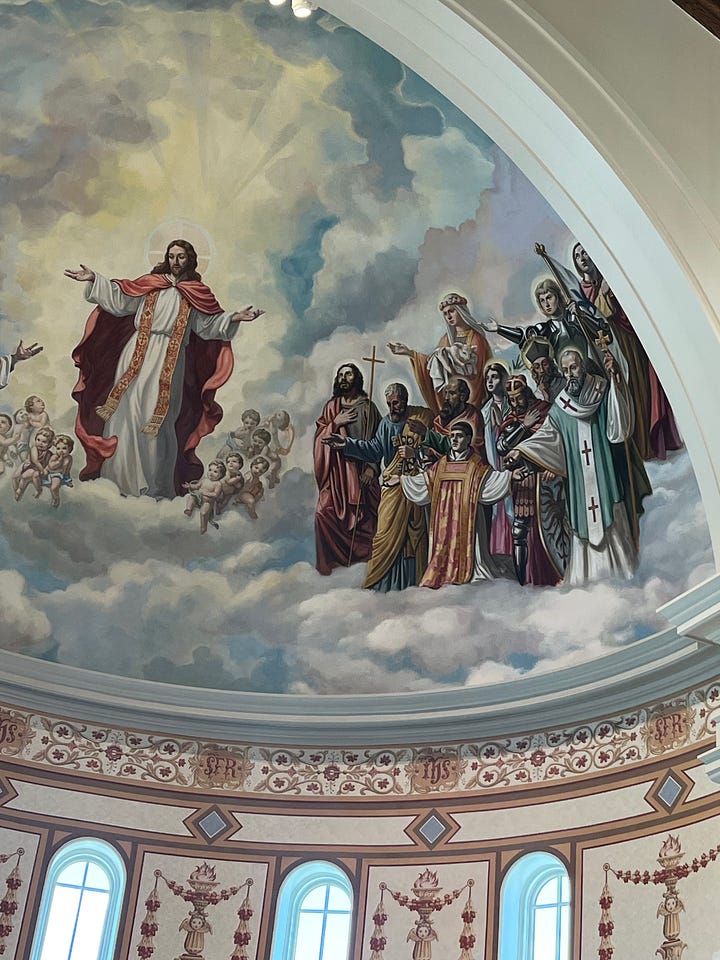by Dan Masterton
What Catholic doesn’t love a good saint? As for me, I’ve long been drawn to the martyrs.
The word martyr comes from old words meaning “witness,” as in the idea of seeing or knowing something and attesting to it by your actions and words.
The canonized-saint-martyrs, or “red martyrs,” gave witness to our faith to the point of death. I think while the magnitude of a martyr’s death and the magnitude of such faith is something worthy of contemplation — and the book and movie Silence are one of the best ways to enter this reflection — most of us who live privileged lives because of our race, our country of origin or residence, our stability, and other reasons, too, will likely not find ourselves in any situation near probable martyrdom.
Other martyrs — sometimes called “white martyrs” — give witness to the faith in a steadfast way that may cause them to experience resistance, rejection, ostracization, or other forms of hardship.
I think the spiritual life of those of us in such privileged positions as to be able practice our faith freely and stably are called to consider how we can then use our privilege to practice this faith boldly, confidently, and attractively. Especially for Catholics, who rarely feel called to street-corner preaching or overt acts of proselytizing, our stronger evangelization comes from lives lived with great charity and service, that are ripe with strong relationships with self, others, and God.
I believe the examples of the saints — from those who lived full lives to death from natural causes all the way to those cut down by the perpetrators of persecutions — offer an accessible and helpful way to consider how to live this out. I feel drawn to the martyrs because I find their challenging circumstances, rather than shaking them down to shells of themselves, embolden them to profound apostolic creativity and inspiring resilience. And that’s what I want to grow into in my heart of faith.
My personal favorites?
St. Maximilian Kolbe is the Marian messenger of Auschwitz whose persistent fidelity led to humble Masses within the concentration camp walls, offering himself up for others’ chores and work, and ultimately volunteering himself as a victim for a punitive execution by the guards — and his prayerful vision showed him the awaiting dual crowns of red martyrdom and white martyrdom, an interesting combination that earned him the distinction of being a “martyr of charity.”
St. Óscar Romero is the justice-seeking advocate of the Salvdordan campesinos in the country’s civil war, who wrestled with being a permissive leader for an entitled Church and ultimately chose instead to call out injustices, challenge oppressive and violent rulers, and stand with the persecuted and faithful poor of his country to the point of being assassinated by these threatened leaders.
And now this past weekend, I had the chance to meet a new hero. While in Oklahoma City, celebrating the ordination to the priesthood of my wife’s cousin, we joined him at the Shrine of Blessed Stanley Rother, where he celebrated his second Mass (after his first at his home parish) as a votive Mass to Bl. Stanley in the chapel where the altar is built on Bl. Stanley’s tomb.
Bl. Stanley is a modern martyr. He was a diocesan priest of Oklahoma City who wished to serve in a diocesan mission Guatemala in the mid-late 20th century. After war broke out and he persisted in ministering in to the indigenous people in their village with charity and love, he became a marked man and was recalled home to the US. He insisted on returning, famously declaring that “the shepherd cannot run.” Shortly after his return to his community there, Bl. Stanley’s home was attacked, and he was killed. The local community in Guatemala asked that his heart remain there, so his heart was interred with them while his remains were buried in Oklahoma, now within the shrine built in his name.
As we joined in the votive Mass, I was taken by the beautiful mural painted above the altar in this chapel. There, Bl. Stanley and Christ reach out for each other in their heavenly bond. Gathered around the two is a beautiful chorus of diverse martyrs, celebrating the deep and wide reach of Christ to the hearts of people all across the world in all times.
After Mass, I sat down up front to bask in the witness of these men and women. There I picked out Maximilian and Oscar, mixed in with others — I thought I spotted St. Peter, perhaps Blessed Miguel Pro, and St. Joan of Arc. If you look closely who do you see?
I could stare at these communions of saints all day, spiritually orbiting around the witness of each heart and relishing the strength of their gathered witness as it speaks to mine. It calls to my mind the luminous high altar built around the pilgrim’s statue of St. James at the cathedral in Santiago, Spain, the church at the end of the Camino pilgrimage routes; it invokes the compilation of tapestries in the Cathedral of the Holy Angels in Los Angeles that mixes canonized saints with ordinary, unnamed people, all go whom face the altar; it also awakens in me the starkly cold yet inspiringly warm sense I had in two visits to St. Maximilian’s death cell in Auschwitz.
The contemplation of such witness can ground our faith today, point us toward the faith we must strive to live tomorrow, and remind us of the great faith that is possible. It’s a faith that’s been modeled by these profound witnesses, these sisters and brothers who go before us.






No comments:
Post a Comment